Transformations change an object's position, size, and orientation without changing its shape. "Transform" is basically a fancy way of saying "move, scale, and rotate".
Transformations are relative to an object's (or component's) pivot point, and take place along/around either the world axes, object axes, or local axes.
Moving an Axis, a Light, or a Camera
There are two methods to move an axis, a light, or a camera:
- With a manipulator in the viewport
- With the numeric fields in the object's properties
To freely move an object:
- In the Tools box, choose Translate. Or press T.
- Click and hold the axis, camera, or light to move.
- Drag the object where you need it.
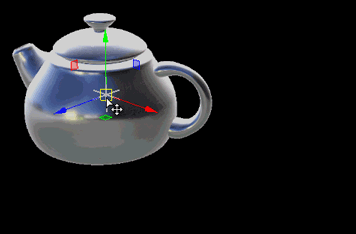
To constrain the movement of an object along one axis:
- In the Tools box, choose Translate. Or press T.
- Click the axis, camera, or light to move to display its manipulator.
- Move the cursor over one of the manipulator's axes to make it active (yellow).
- Click and drag the axis to move the object where you need it.
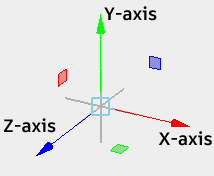
To constrain the movement of an object to a plane:
- In the Tools box, choose Translate. Or press T.
- Click the axis, camera, or light to move to display its manipulator.
- Move the cursor over one of the manipulator's planes to make it active (yellow).
- Click and drag the plane to move the object where you need it.
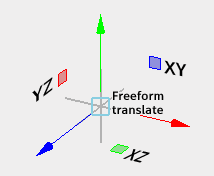
To move an object precisely along one axis:
- In Schematic view, click the object to move.
- Do one of the following to edit the X, Y, and Z position fields:
- Drag a position field to move the object.
- Click a position field to display the calculator. The object moves as soon as you click Enter.
Rotating an Axis, a Light, or a Camera
There are two methods to rotate an axis, a light, or a camera:
- With a manipulator in the viewport
- With the numeric fields in the object's properties
To rotate an object:
- In the Tools box, choose Rotate. Or press R.
- Click the axis, camera, or light to display its manipulator.
- Move the cursor over one of the manipulator's ring to make it active (yellow).
- Click and drag the ring to rotate the object.
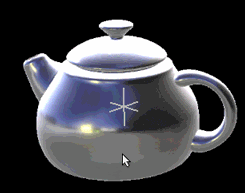
To precisely rotate an object:
- In Schematic view, click the object to rotate. This can be an axis, a light, or a camera.
- Do one of the following to edit the X, Y, and Z rotation fields:
- Drag a rotation field to rotate the object around that axis.
- Click a rotation field to display the calculator, and then enter a value. The object rotates as soon as you click Enter.
Scaling an Axis
There are two methods to scale an axis:
- With a manipulator in the viewport
- With the numeric fields in the object's properties
To scale an object uniformly in all directions:
- In the Tools box, choose Scale. Or press E.
- Click and hold the axis of the object to scale.
- Drag cursor to scalle the object to scale uniformly in all directions.
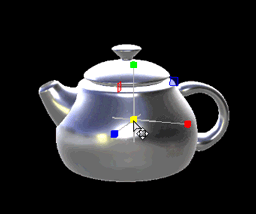
To constrain the scaling of an object along one axis:
- In the Tools box, choose Scale. Or press E.
- Click the axis to display its manipulator.
- Move the cursor over one of the axis' handles to make it active (yellow).
- Click and drag the handle to scale the object along that axis.
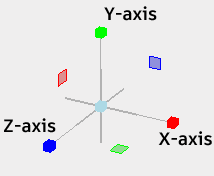
To constrain the scaling of an object to a plane:
- In the Tools box, choose Scale. Or press E.
- Click the axis to display its manipulator.
- Move the cursor over one of the manipulator's planes to make it active (yellow).
- Click and drag the plane to scale the object in that plane.
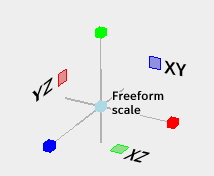
To scale an object precisely along one axis:
- In Schematic view, click the object to scale.
- Do one of the following to edit the X, Y, and Z position fields:
- Drag a position field to move the object.
- Click a position field to display the calculator. The object moves as soon as you click Enter.
Note: Enable Prop to scale uniformly in all directions.